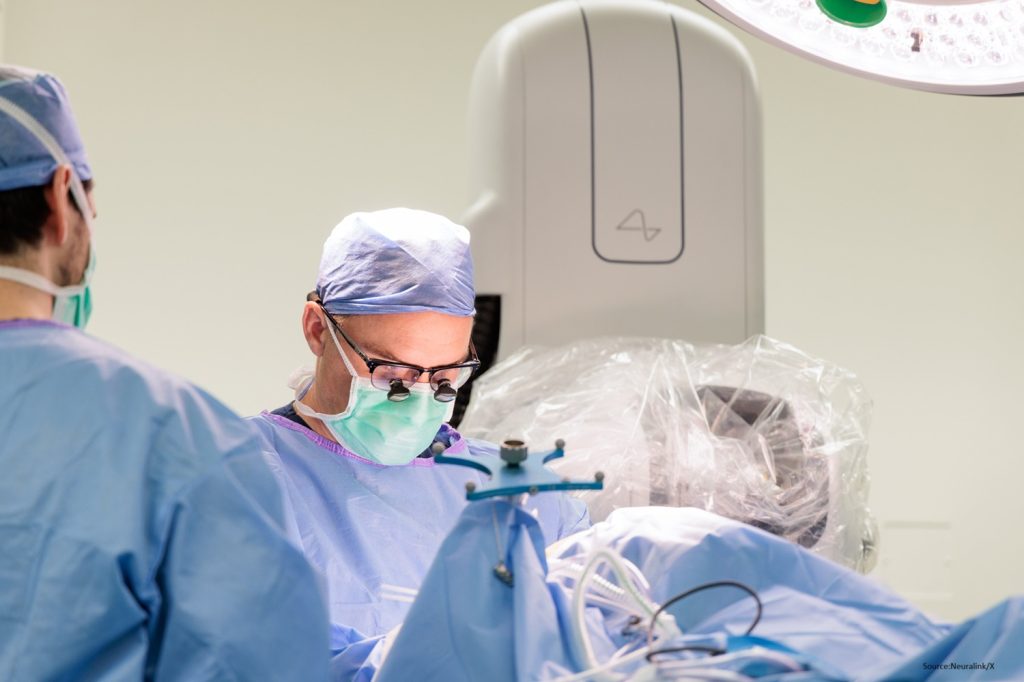In a milestone development, Neuralink, Elon Musk’s brain–computer interface (BCI) company, has successfully completed two surgeries in Canada, marking its expansion beyond the United States for the first time. The move underscores the company’s ambition to establish itself as a global leader in neurotechnology, with active studies underway not only in Canada but also in the United Kingdom, United States, and the United Arab Emirates. Neuralink has also called for volunteers to join its Global Patient Registry through neuralink.com/trials, signaling its intent to broaden participation in human trials worldwide.
Musk himself has stated that Neuralink is targeting a restoration of limited sight to the completely blind as early as 2026. At present, the company has successfully implanted devices in 11 patients, enabling them to extend both their mental and physical capabilities. While the news represents scientific progress, it also revives broader debates on the promises and perils of fusing human biology with advanced computing.
The Promise and Peril: Pros and Cons of Neuralink
Neuralink’s success rests on its potential to transform medicine and extend the frontiers of human enhancement. However, as with any disruptive technology, the benefits coexist with profound risks.
Pros of Neuralink:
- Restoration of Functionality – The technology could revolutionize treatments for neurological conditions such as paralysis, blindness, or Parkinson’s disease. By bypassing damaged neurons, BCIs can restore lost communication pathways between the brain and body.
- Augmented Human Abilities – Beyond medicine, Neuralink offers the possibility of enhancing memory, cognition, and sensory capabilities, making humans more competitive in an AI-driven world.
- Scientific Discovery – Access to real-time brain data could help unravel mysteries of consciousness and mental health, reshaping neuroscience research.
Cons of Neuralink:
- Cybersecurity Vulnerabilities – Neural implants are connected devices. If hacked, they could become conduits for mind manipulation or data theft, raising unprecedented security concerns.
- Ethical and Privacy Dilemmas – Brain data is the most personal form of information. Questions remain about who owns this data and how it might be exploited by corporations or governments.
- Biological Risks – Surgical complications, rejection of implants, or long-term effects on neural tissue remain largely unknown, as human trials are still in their infancy.
- Socioeconomic Divide – If Neuralink becomes commercially available, it risks creating a new digital divide where only the privileged can afford cognitive or physical enhancements.
Thus, Neuralink’s promise lies in advancing healthcare and human capability, but its risks cut to the very core of individual autonomy and societal equity.
Neuralink and the Road to Transhumanism
Neuralink is not merely a medical project, it is a transhumanist project in practice. Transhumanism, the philosophy of enhancing the human condition through technology, envisions a future where biological limitations are overcome by artificial enhancements. Neuralink embodies this vision by enabling a symbiosis between the human brain and artificial intelligence.
As argued in Presence Secure’s exploration of transhumanism, the next decade could blur the line between human and machine. From wearables to implants, society is moving toward hybrid intelligence, where thought processes may no longer be purely human. Neuralink could represent the first step toward this post-human era, where decisions, memories, and even emotions might be augmented, or influenced, by algorithms.
The Future of Neuralink: Promise, Peril, and Power
Looking forward, Neuralink is poised to shape the future of medicine, neuroscience, and society itself. If successful, its next decade may deliver:
- Medical breakthroughs: Restoring vision, hearing, and mobility for millions.
- Global adoption: Expansion of clinical trials beyond North America into Europe, Asia, and Africa.
- Human-AI integration: Enhanced cognition, faster learning, and seamless interaction with machines.
- New frontiers of cybersecurity and ethics: As implants proliferate, governance frameworks will need to balance innovation with privacy, autonomy, and equity.
Yet the risks cannot be ignored. He tech could become a tool of liberation for patients, or a tool of control in the wrong hands. The very fact that our brains may one day require cybersecurity illustrates how disruptive this path could be.
Conclusion
The successful surgeries in Canada are more than just medical procedures; they are milestones in the human journey toward transhumanism. Neuralink represents both hope and hazard: the hope of curing incurable conditions and the hazard of redefining what it means to be human.
As Musk’s vision expands globally, society must ask: Do we embrace this technology wholeheartedly, or do we proceed with caution, building safeguards before the boundary between human and machine disappears?
The answer will determine not only the fate of Neuralink but also the trajectory of humanity itself in the 21st century.

